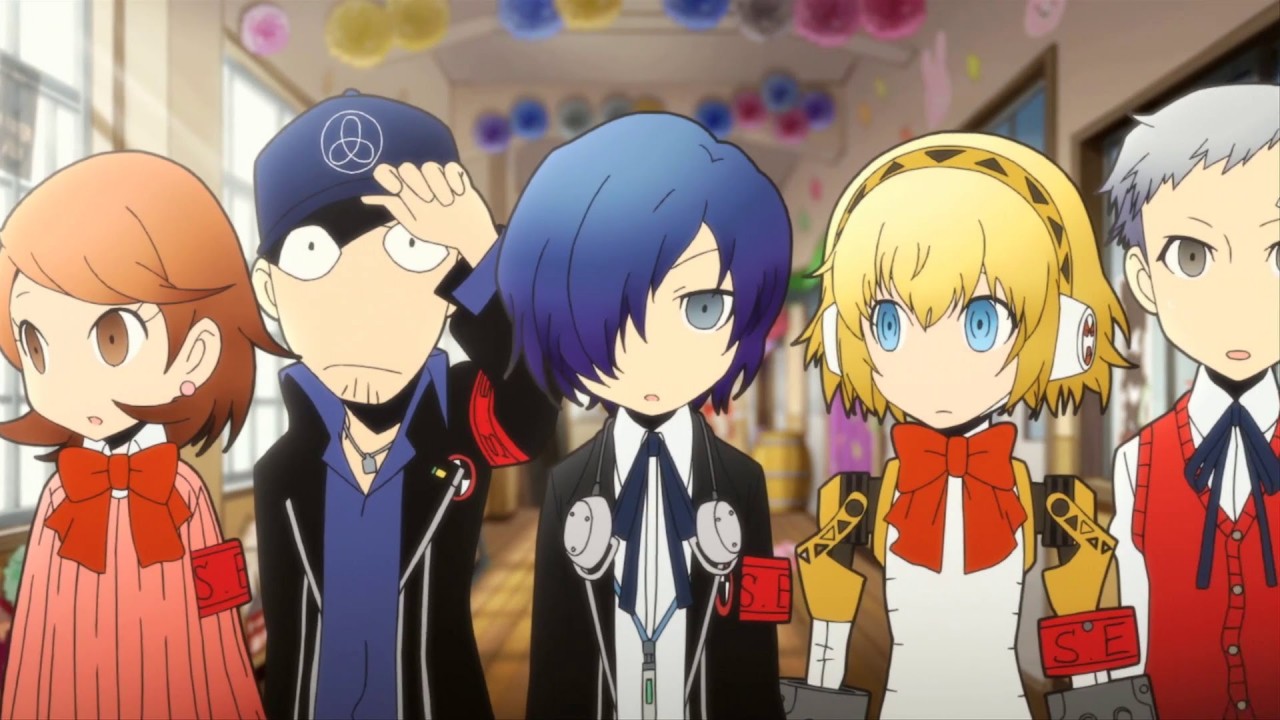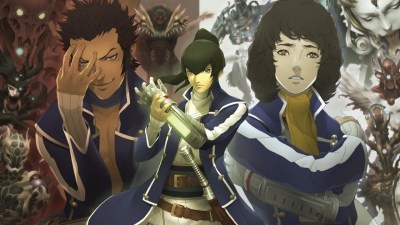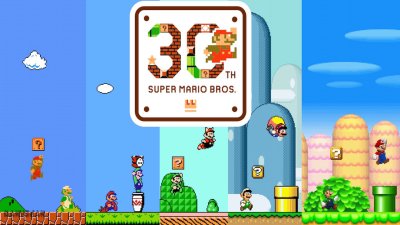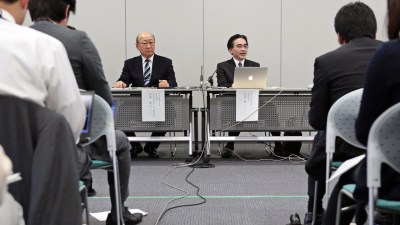There’s a certain appeal to crossovers; two different properties colliding together, fusing into something both familiar and unique. Persona Q: Shadow of the Labyrinth combines the characters from Persona 3 and 4 and marries them with the gameplay of Etrian Odyssey. Unfortunately, despite the brilliant concept, Persona Q doesn’t make the best use of its cross-over potential.
The convenient plot device of time-travel has allowed Atlus to pluck the casts of their break-out mass market hits Persona 3 and Persona 4 from mid-way through their respective games (at the apex of their character development), displacing them into an otherwise uninhabited shadow world. Questions abound: How did they get here? What’s up with the giant unassailable clock tower that’s erected itself from thin air? What’s on the other side of those fastidiously locked doors? And how do the sealed memories of amnesiac newcomers Zen and Rei fit into the larger puzzle? These mysteries, like much of Persona Q, are to be slowly but persistently chipped away, one dungeon at a time… a really long time.
As with Etrian Odyssey series, you guide your party through a handful of sprawling labyrinthine floors that make up the dungeons – all the while mapping your surroundings out onto the 3DS’s touch screen. But there’s a distinct rhythm to Persona Q that hearkens back to its source material. Dungeon outings last up to an hour, but those who get caught by the wrong enemy can be finished off in five minutes.
While death means a loss of progress, it is thankfully infrequent. Persona Q is not really a hard game; it’s a pressurized game, one that punishes mistakes and demands engagement with every sub-system. Death constantly stands outside the door, a morbid reminder of your mortality, but rarely knocks.
But Persona Q requires a thorough, exacting approach that makes it distinctly slow. Clearing a single dungeon floor can take upwards of 5 hours; yet thorough searching is handsomely rewarded—an infinite health potion found early on was still useful 20 hours later. Such optional goodies alleviate the difficulty curve in the long-term, even though the immediate moment-to-moment obstacles might continue to grieve.
Dungeon-crawling in Persona Q often boils down to a bet you make with yourself, to see how far you can get on a single excursion, maybe even to the next healing point and beyond, without turning back, or how long you can go without purchasing some of the ever expanding range of armors and weapons – allowing you to maximise how far your wallet goes. Being short on money is rarely a problem, but the game’s underlying threats still pressure the player into pinching pennies.
This kind of pressure permeates Persona Q, giving the impression that it’s harder than it is, and in turn players feel rewarded for having achieved something “difficult.” You’ll find yourself playing frugally, even if you don’t have to and it’s time consuming to do so.
Up to 30 minutes can pass by in a flash as equipment is rotated, stats cross-checked and party members re-organized. Persona Q silently siphons away the players’ time. And this is a game where 25 hours can pass by just trying to clear a single dungeon. The time and effort spent gives an empathic appreciation of the gruelling dungeon-crawling the characters are going through. It’s almost like feeling the dungeon grime setting in under your fingernails.
But as slow as progress can be at times, you rarely get stuck. Sometimes you’ll fall behind the difficulty curve and things slow as a result, and at other times you’ll glide effortlessly through an entire floor. The difficulty curve swings back and forth with the regularity of a pendulum, making the tectonic shift of difficulty and progress speed regular in its irregularity.
This superficial illusion of “difficulty” won’t fool hardened dungeon-crawlers, and its unrelenting focus on said dungeon-crawling may turn off Persona fans looking for the social interactions that are such a big part of the series. Persona Q is a “gateway game”, a way for traditional mainstream JRPG fans to transition to the dank splendor of dungeon crawling. And that’s an acquired taste.
Unlike the dungeons in the source Persona games, which juxtaposed bright candy color pallets with disturbing imagery to surreal effect, Persona Q is either/or. But whether you’re skipping through an Alice in Wonderland-themed maze or being chased down the rusted corridors of a haunted school by a giant baby in S&M wear, you’ll always be kept occupied with a new spin on the game’s tile-based movement.
One dungeon, for example, requires you to avoid eye contact with sub-bosses. Solving the problem, bizarrely enough, requires you to navigate backwards, essentially moonwalking past enemy sentries.
But those looking for a game more focused on the social interactions between the imminently lovable Persona characters will find Persona Q lacking. Not only are the social interaction skits no longer tied to player progression, but the game’s narrative reduces the characters to one-dimensional versions of their former selves.
For example, fans may be familiar with Chie’s meat cravings. But here this quirk isn’t simply one comical part of her character, but everything that defines her. Kuma (aka Teddy) makes fruitless advances on the female cast, only to be rebuked or ignored. It’s funny the first few times, but not so much 30 hours later. Even established character relationships feel hollow; as in Persona 3, Akihiko is reproached by Mitsuru for his blasé, gung-ho attitude towards combat, but there’s no hint of the mutual respect between them that underpins their relationship here – and without it they feel like they’re going through the motions.
Placing characters at the height of their development together leaves little room for them to grow beyond their established character templates. They languish in a handful of their most recognizable traits. But it’s not all bad. The new chibi art-style is not only charming, but the visible facial expressions help convey oodles of character – even if those characters are written one-dimensionally. Cute flourishes such as Zen and Rei holding hands when they dash in for an all-out attack make it hard to go back to the rudimentary polygonal models of previous Persona games.
Although the characters might not be as well-developed as they were in Persona 3 or 4, they still manage to shine when brought face to face with their counterparts. Kuma and Aegis both look at humanity with intense curiosity from the outside in. Kanji and Shinjiro share the experience of having people assume the worst about them because of the way they look. In this way, Persona Q meets some of its cross-over potential. But with such leaden pacing, it’s a game for the most hardcore of series or genre fans.
With patience, Persona Q provides enjoyment - but it sure as hell makes you work for it.




